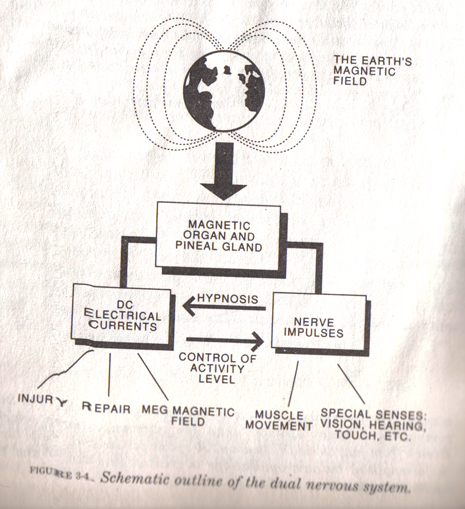| At the atmosphere’s edge, where spiders, moments, gods, and all the other silent things live, the black noise―black as space, but golden as ever―travels on nothing to nowhere for light-years, like measures of rest that seem to last an entire score, it strips the babble off a baby, flattens wineglass song, and rips the screams out the maw of a dying animal, spreading uniformly forever, to its furthest reaches and depths, where here and there, the silence is greeted by giant humming rocks like hollow unstemmed noteheads, and singing stars that hum after death like posthumous box-sets, and the nervous noise of all sentient beings below, who rock themselves to death with death rattles and death growls, and rage, rage, rage with musical machines, against the dying of the light and sound. | |
| In the distant Perseus cluster of galaxies, there is a black hole that emits a single note―a very low inaudible B-flat, 57 octaves below Middle C, with a frequency of 10 million years. While it’s true that space is a vacuum and for the most part your outer spacious screams would be as silent as God’s, there are stray bits of gas and dust that allow sound waves to travel. The gas around the Perseus cluster acts as a medium for the black hole’s sound waves to be measured. | |
| Drag over the B-flat on the left. If you hold the cursor in the center of the notehead, you’ll get sucked into the B-flat event horizon, which incidentally sounds like a Q Bass. If you move the cursor away from the notehead, the tone will decay, keeping the fabric of reality intact.
There are all sorts of hums out there in the heavens. The Earth makes a number of different hums―the Taos Hum and other regional drones that are only subjectively heard by certain people, the electromagnetic hum of the Schumann Resonance, the Electric Hum of Power Grids and other machines, and the chirps and whistles of the polar lights. |
| The Earth Tone is the keynote of our planet, except it isn’t a sound at all. It’s the pulsing of the Earth’s geomagnetic field. Lightning strikes in our atmosphere create standing waves in the extremely low frequency portion of the electromagnetic spectrum (the kind of phenomena you can see). This is the same band our electric brains use. The frequency spectrum of the Earth’s magnetic field is identical to that of other organism’s brains when viewed on an electroencephalograph. The fundamental mode of the Earth is around 7-10 Hz, which is in the alpha band of our brains―a calm, and restful state of minds, allowing escape from the usual beta bustle. When converted into sound, the Earth’s tonic is a low B, two octaves below bass clef, and nine ledger lines below the staff. If you had antennae for ears, this is what you would hear all day―a Great Farting rising up from the crust, and fizzling down from the firmament. |
It works like this you see:

It seems the Universe is heavy on the B-Tones, at least on our pale blue dot. Not only does the Earth hum a low B, but the eighth overtone of the Earth is around 60 Hz―the same frequency that hums from the North American Power Grid―and now this black hole on the other side of the Universe is also humming a flatted B. Why the bees even buzz sharp B’s, and maybe their third eyes are receiving Persian waves. I wouldn’t be surprised, if it turns out the cosmos are a large holographic bassoon blown by some crazy alien who keeps us bound to Concert B-flat.
So get out there and fuck the silence kids! It’s time to go a-caroling…
After all, it ’twas Jingle Bells that ’twas the first song played in space. They say the spheres still vibrate in sympathy with that dashing little song.



